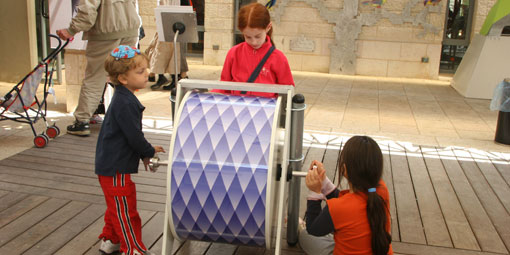


 |
||
 |
||
|
The exhibit is a cylinder that is rolled by hand. Its surface is covered by a pattern of diamonds, that visitors watch through a window while rolling the cylinder. When one looks through the window it seems that the diamonds are getting brighter, although all diamonds are exactly the same. Through the window, we see mainly the abrupt changes in lightness in the border between two diamonds, and we are less sensitive to the gradual changes within each diamond. The perception of rapid changes (in time) or sharp boundaries (in space) has much greater survival value than perception of slow or smooth changes. Accordingly, evolution has developed neural mechanisms of enhancing the salience of such stimuli, at the expense of the others. The suppression of information about slow changes in time is achieved by adaptation the process by which our senses change their sensitivity in response to changes in the intensity or quality of the stimulus. For example, when the brightness of a light suddenly increases, our vision responds strongly at first, but after a short time the sensitivity decreases (partly by closing the pupil) and the response returns nearly - thought not quite - to its level before the change. This means there is a peak of response following the change - making us very sensitive to such a change - and only a small residue of response change to give us information about the absolute brightness. For the effects of spatial boundaries, see Lift the Strip.
|
||

 Eternally Lighter!
Eternally Lighter!